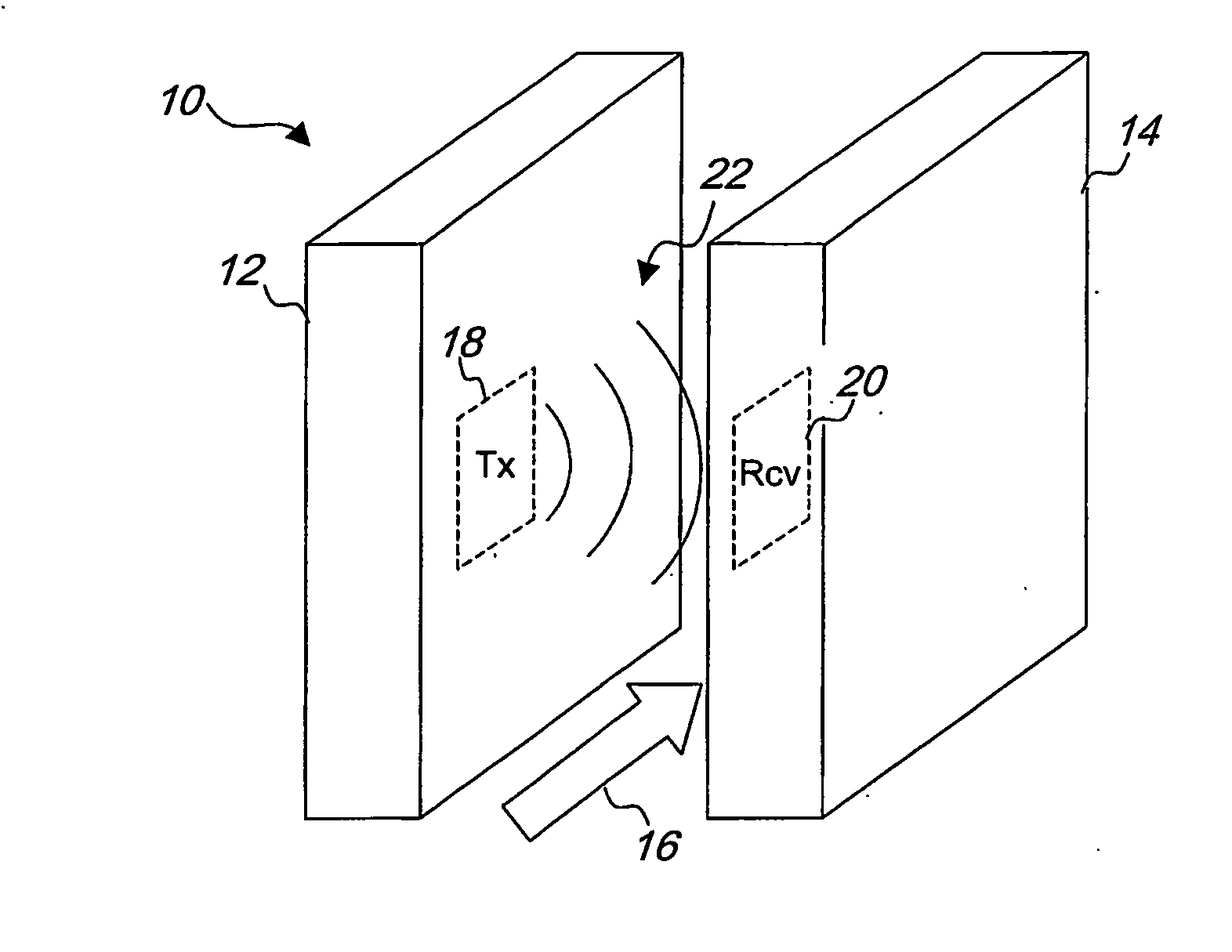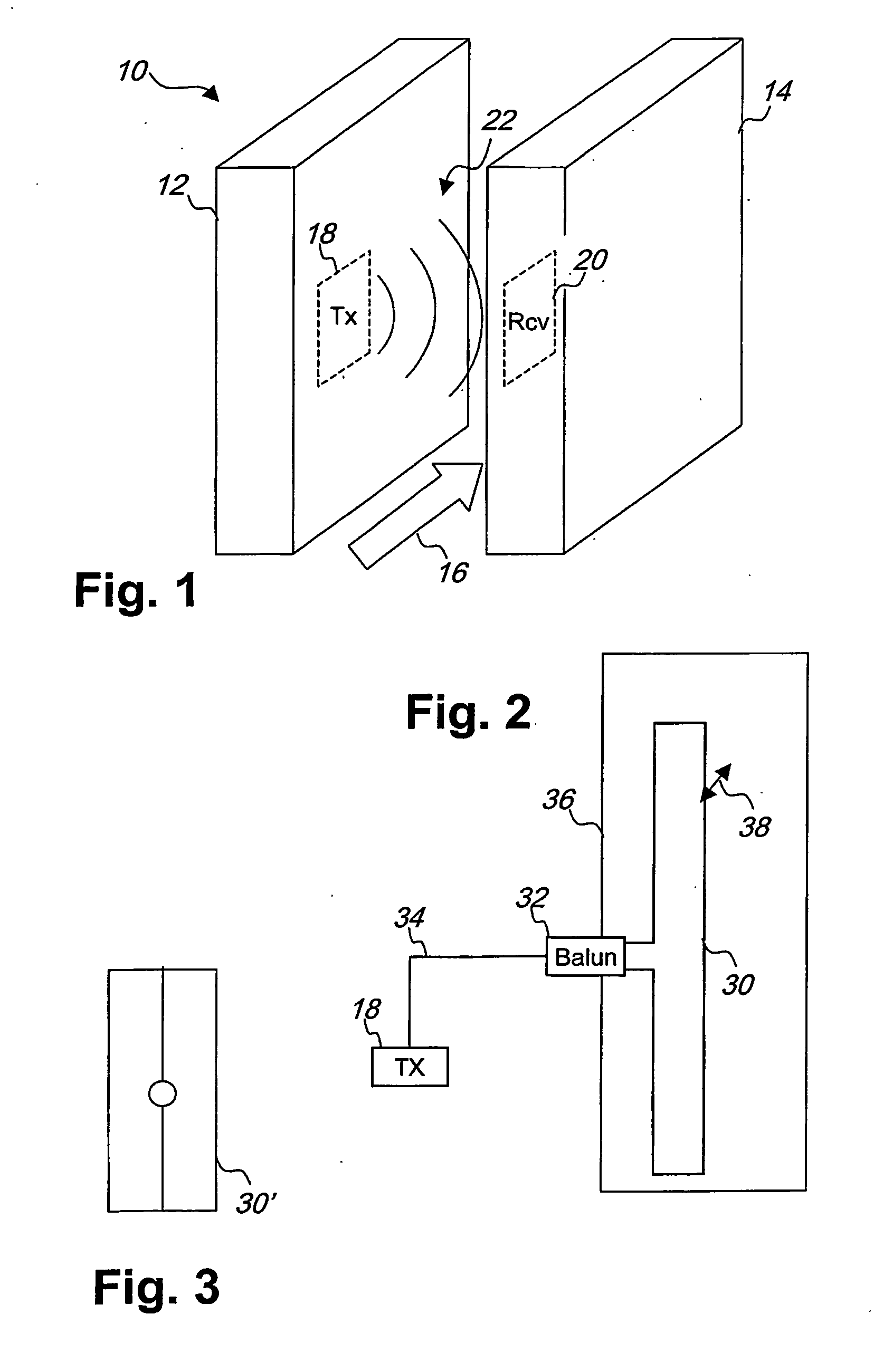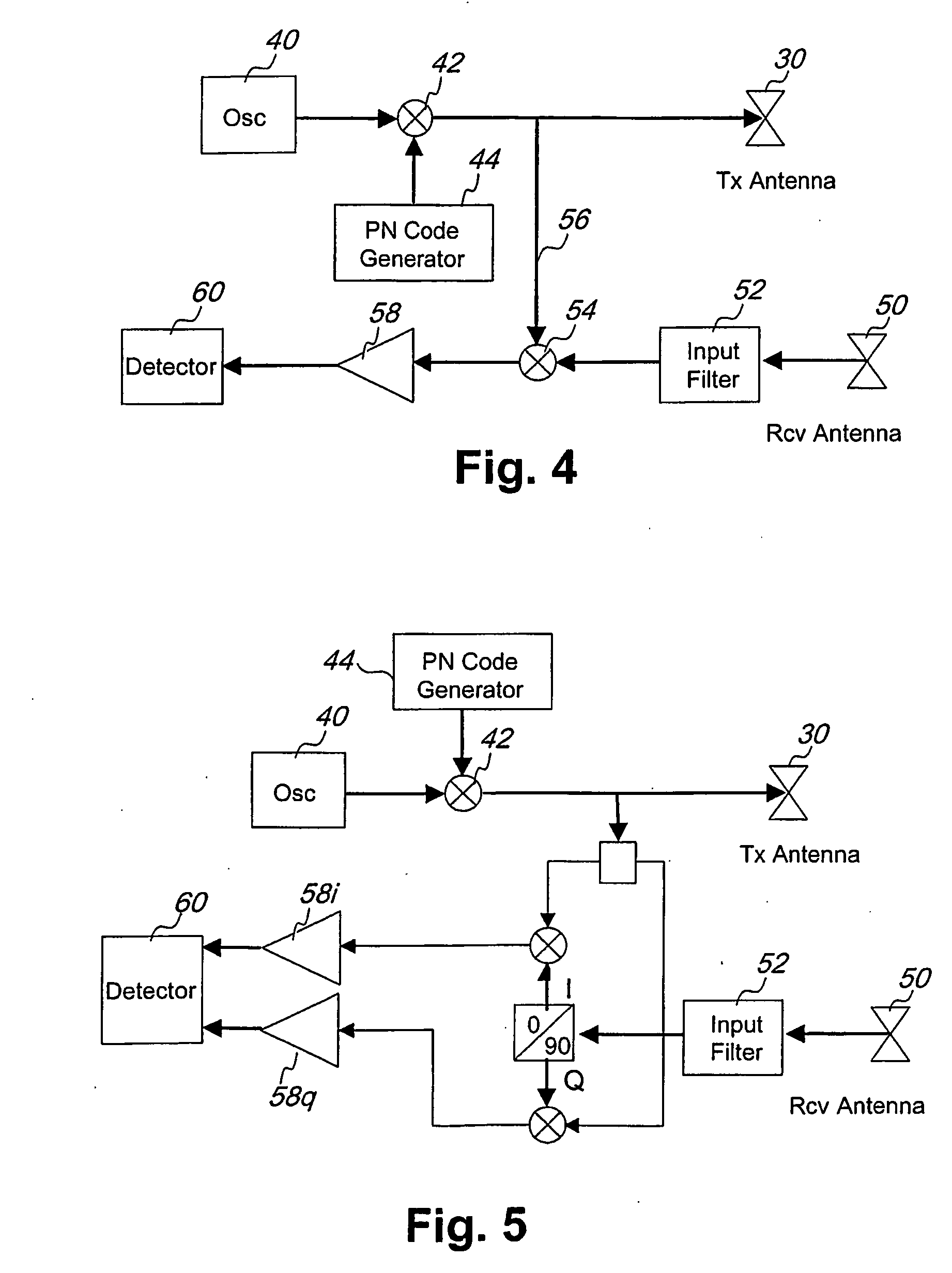Human detection device
- Summary
- Abstract
- Description
- Claims
- Application Information
AI Technical Summary
Benefits of technology
Problems solved by technology
Method used
Image
Examples
Embodiment Construction
[0017] Referring to FIG. 1, there is illustrated in a perspective drawing a device for human detection in accordance with an embodiment of the present invention. The device 10 includes two plinths 12 and 14 defining a passageway with an ingress direction as indicated by an arrow 16. One pedestal, for example plinth 12, houses a transmitter 18 while the other pedestal 14 houses a receiver 20.
[0018] In operation, the transmitter 18 transmits an RF electromagnetic wave indicated generally by 22 from a transmitter antenna, not shown in FIG. 1, while the receiver 20, coupled to a receiver antenna, also not shown in FIG. 1, receives a portion of the electromagnetic waves. With no person present in the path, a relatively steady signal strength is received.
[0019] However, when a person passes through the paths, for example in direction 16, the signal strength decreases because of absorption of the signal. If two persons were to pass, an even lower signal strength would be detected. By adj...
PUM
 Login to View More
Login to View More Abstract
Description
Claims
Application Information
 Login to View More
Login to View More - R&D
- Intellectual Property
- Life Sciences
- Materials
- Tech Scout
- Unparalleled Data Quality
- Higher Quality Content
- 60% Fewer Hallucinations
Browse by: Latest US Patents, China's latest patents, Technical Efficacy Thesaurus, Application Domain, Technology Topic, Popular Technical Reports.
© 2025 PatSnap. All rights reserved.Legal|Privacy policy|Modern Slavery Act Transparency Statement|Sitemap|About US| Contact US: help@patsnap.com



